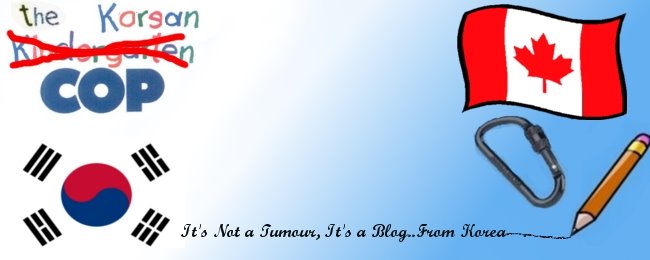On Tuesday, January 12th, I left Busan for Daejeon to meet my friend Seong-jun (henceforth to be referred to as the name he used in Canada, where I met him – Jun).
Jun was busy writing an important test when I arrived at the station, so I had to wait about an hour and a half for him to come pick me up. However, it didn’t take but one minute after I stepped off the train for yet another Jehovah’s Witness to corner me and try to spread the good news about knocking on people's doors and stopping them in train stations.
I read the man’s Watchtower magazine as I waited for Jun. As I passed the time reading about how important it was to continue to knock on people’s doors, even though the author’s insistence to do so caused him to be kicked out of his refugee colony after WWII, I noticed that the homeless people of Daejeon have their own way of passing the day - gambling games.
Even in Seoul I’ve never seen as many homeless people in one place as I did out in front of Daejeon station this day (Jun later told me Vancouver was worse). Unlike some of those "less fortunates" in Seoul station though, the homeless people of Daejeon weren’t kicking my suitcase or yelling at me. Instead, they were busying themselves by playing a gambling game.
The specific game they were playing was called “coin toss.” Two lines are drawn on the ground about 4 metres apart. Each player competing in that round lines up at the throwing line with his or her 100 won coin (about the same value as a dime, but the size of a quarter). Each player then gets one chance each to throw his or her coin at the line. The player whose coin is the closest to being directly on the line wins all the other coins thrown that round. Not only does this make for a great opportunity for the homeless to earn a little money, it also provides great entertainment for the community's old men who have nothing better to do than stand around at the train station watching homeless people play coin toss.
When Jun finally arrived we went to visit his friend at the pool hall. Because of the suffocating population density, Korean youth tend to become quite adept at games which do not require a lot of space to be played. One of these small space activities is pool (billiards). Almost every street has a pool hall stuffed away on the third floor of some dirty, old building, and consequently Koreans tend to play pool as well as Canadians play hockey.
The type of pool you may be used to playing in Canada - 6 pockets, 15 balls - is also played in Korea, but the most popular type of pool is called carom billiards, or three cushion billiards.
Thought to have been developed in France, during the 18th Century, carom billiards is played on a table with no pockets, and there are only four balls. Each team (of one or two players) has its own cue ball. To score a point, the player shooting attempts to shoot his/her cue ball at the first of two scoring balls, and then have the cue ball ricochet off three cushions before striking the second scoring ball. If the player succeeds in accomplishing this feat, he/she scores one point and then gets to try again. The feat of scoring a point is so difficult though, that professional level players average only one point before failing. Even world class players average less than two points before failing.
To make things easier on ourselves, Jun and I, and Jun’s friend, and Jun’s friend’s friend (a friend of a friend of a friend of mine) decided to simply count a point if you could get your cue ball to hit one ball and the other ball in succession. Even this was incredibly hard, but later of the three friends mentioned managed to score five points in a row during one inning (turn).
(Jun's friend, on the right, and Jun's friend's friend, on the left, during a short break from our pool match - Jun had disappeared to make a phone call just before this picture was taken.)
After a short game of billiards, we left the two pool sharks to go back to Jun’s place for supper. His mother had prepared yet more Korean food for me, and I was again able to show off my chopstick skills and spicy food eating ability, which for some reason always seems to surprise Koreans even when they know I lived in Korea for five months. At about 7:30 PM, Jun drove me back to the train station where he bought me a ticket on the Saemaul train.
Now, this (the Saemaul train) is the way to travel! Not nearly as fast as the KTX, and more expensive than the Mugunghwa train, the Saemaul train I rode on was far less crowded than either of my journeys on the Mugunghwa (to Busan, and to Daejeon), and much more comfortable than both the KTX and Mugunghwa trains. I can’t believe I confused the Mugunghwa train for the Saemaul train; never again.
(This is a structure built for the 1993 Worlds Expo held in Daejeon. The Expo was held in Daejeon to commemorate the 100th anniversary of Korea's first appearance at the 1893 Expo in Chicago. Now though, the Expo site in Daejeon looks like a ghost town, as there were no people there at all on this day.)



No comments:
Post a Comment